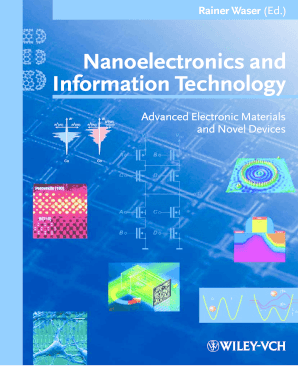
Get Nanoelectronics And Information Technology Pdf
How it works
-
Open form follow the instructions
-
Easily sign the form with your finger
-
Send filled & signed form or save
How to fill out the Nanoelectronics and Information Technology Pdf online
This guide provides a comprehensive step-by-step approach for filling out the Nanoelectronics and Information Technology Pdf online. Users will find clear instructions tailored to their needs.
Follow the steps to successfully complete the form online.
- Click the ‘Get Form’ button to access the document and open it in your online editor.
- Begin by filling in your personal information in the designated fields. This usually includes your name, address, email, and phone number. Ensure all information is accurate and up-to-date.
- Next, review the sections that detail the content of the book such as the preface and chapters. You may want to make notes on specific topics that interests you.
- Proceed to indicate your order preferences. Specify the number of copies you wish to purchase and select whether the order is for private or business use.
- Fill in your delivery and invoice address. Double-check the entries for accuracy to avoid any issues with shipment.
- If your payment details differ from your delivery address, include this information in the appropriate section in the form.
- Finally, review all the information you have entered to ensure it is complete and correct. Save your changes, and then you can choose to download, print, or share the completed form.
Start competing documents online now to gain access to essential knowledge in nanoelectronics and information technology.
Information Technology PDF refers to documents that encompass a wide range of topics about IT, including system design, data management, and cybersecurity. These PDFs provide valuable insights into how technology influences various aspects of our lives and businesses. By integrating knowledge from a Nanoelectronics And Information Technology PDF, you can gain a deeper appreciation for how these fields collaborate to drive innovation.
Industry-leading security and compliance
-
In businnes since 199725+ years providing professional legal documents.
-
Accredited businessGuarantees that a business meets BBB accreditation standards in the US and Canada.
-
Secured by BraintreeValidated Level 1 PCI DSS compliant payment gateway that accepts most major credit and debit card brands from across the globe.


